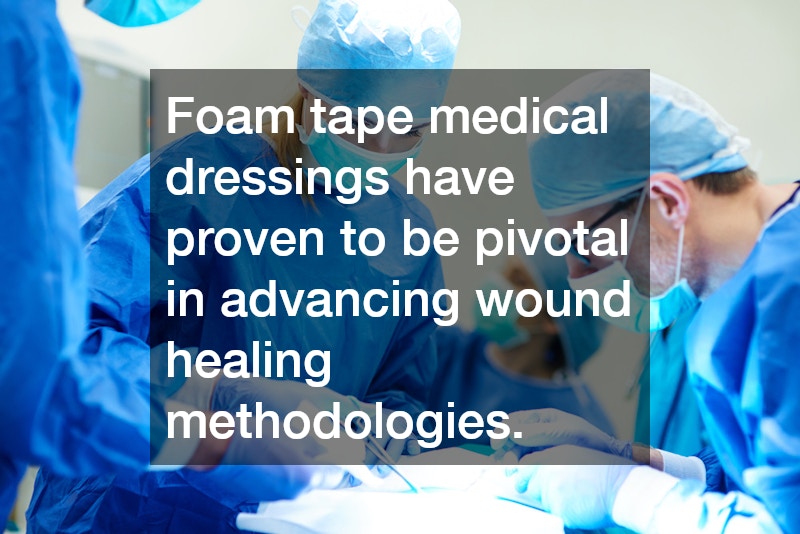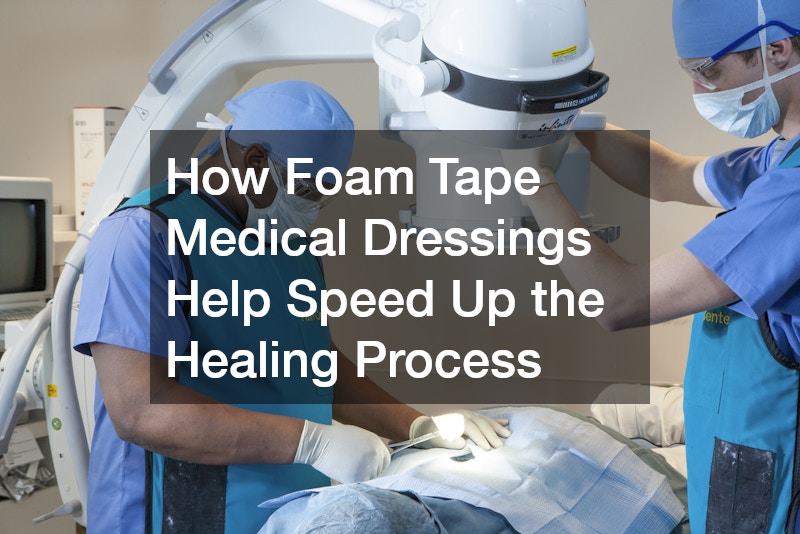
In the realm of modern medicine, wound management plays a critical role in patient care. Efficient healing is essential not only for patient recovery but also for reducing healthcare costs and preventing complications. Among the tools used to enhance wound healing, foam tape medical dressings have gained prominence for their efficacy and versatility. These dressings are engineered to maintain an optimal environment for wound healing while offering comfort and ease of use.
This article explores how foam tape medical dressings contribute significantly to speeding up the healing process.
The Role of Foam Tape Medical Dressings in Wound Healing
Foam tape medical dressings are designed to provide a moist wound environment, which is crucial for optimal healing. These dressings consist of a semi-permeable polyurethane layer that allows moisture vapor exchange while protecting the wound from contaminants. By maintaining a moist wound environment, foam dressings promote faster tissue regeneration and reduce the risk of infection. Studies have shown that moist environments can accelerate the healing process by up to 50%. This is primarily because moisture helps in the breakdown and removal of dead tissue, facilitating the growth of new tissue.
Moreover, foam tape dressings are adept at providing thermal insulation and cushioning, shielding the wound from physical trauma. The cushioning effect not only prevents further injury but also alleviates pain, allowing for a more comfortable healing process. Over time, this can significantly reduce patient discomfort and improve overall wellbeing. Additionally, the adhesive nature of foam tape ensures that the dressing stays securely in place, even in challenging locations or during patient movement. This stability is essential for maintaining the wound environment necessary for healing over extended periods.
The Advantages of Foam Tape Medical Dressings Over Traditional Dressings
Compared to traditional gauze dressings, foam tape medical dressings offer several distinct advantages. One of the primary benefits is their ability to manage exudate effectively. Foam dressings can absorb large amounts of exudate, keeping the wound dry and minimizing the risk of maceration of adjacent skin areas. By effectively managing exudate, these dressings help mitigate the unpleasant odors often associated with wound care, thus improving the patient’s comfort and dignity. Exudate management is a key component in preventing wound complications such as infections and prolonged healing times.
Another significant advantage is the reduction in dressing change frequency, which is often needed with traditional dressings. Foam tape medical dressings can remain in place for several days depending on the wound’s condition, considerably minimizing disruption to the healing tissue. This reduction in intervention not only benefits the wound healing process but also reduces the stress and inconvenience for the patient. Additionally, less frequent dressing changes decrease the demand on medical staff time, which can be crucial in busy healthcare settings. Consequently, this efficiency translates into cost savings for healthcare providers and patients alike.
The user-friendly nature of foam tape dressings adds to their appeal both in clinical settings and for patients managing wounds at home. The non-stick surface of these dressings ensures that they do not adhere to the wound bed, minimizing pain during removal. Furthermore, the ease of application makes it possible for patients without professional assistance to apply and adjust dressings as needed. By empowering patients to take an active role in their recovery, foam tape dressings promote a sense of autonomy and reduced anxiety around wound care. In summary, the advantages over traditional alternatives make foam tape medical dressings a preferred choice for both medical professionals and patients.
The Conditions That Benefit from Foam Tape Medical Dressings
Chronic wounds, such as diabetic foot ulcers and pressure sores, significantly benefit from foam tape medical dressings. These dressings are integral to facilitating faster healing by maintaining the necessary moisture balance and protecting against further damage. In patients with high-risk wounds, this proactive wound management plays a pivotal role in reducing the likelihood of further complications, including infections. Foam dressings help manage the high exudate levels characteristic of chronic wounds, thereby preventing additional tissue breakdown and promoting granulation tissue formation. As a result, patients experience a reduction in healing time and an improvement in quality of life.
Surgical patients also frequently benefit from the advantages provided by foam tape dressings. Post-surgical wounds require meticulous care to prevent infection and ensure swift recovery. By offering a protective barrier and maintaining an ideal healing environment, foam tape dressings support the complex healing processes that follow surgery. The ability to manage exudate is especially vital in the early days post-surgery, where wound exudate is at its highest. Therefore, incorporating foam tape medical dressings into post-operative care can significantly improve patient outcomes and satisfaction.
Foam tape medical dressings have proven to be pivotal in advancing wound healing methodologies. Through their ability to maintain a moist and protected environment, manage exudate, and provide patient comfort, these dressings significantly speed up the healing process. When compared to traditional dressing methods, the advantages of foam tape medical dressings are clear and undeniable. They offer an effective, efficient, and patient-centered approach to wound care that enhances healing outcomes and reduces healthcare costs. As medical technology continues to evolve, foam tape medical dressings will undoubtedly remain a cornerstone in the effective management of various challenging wounds.


